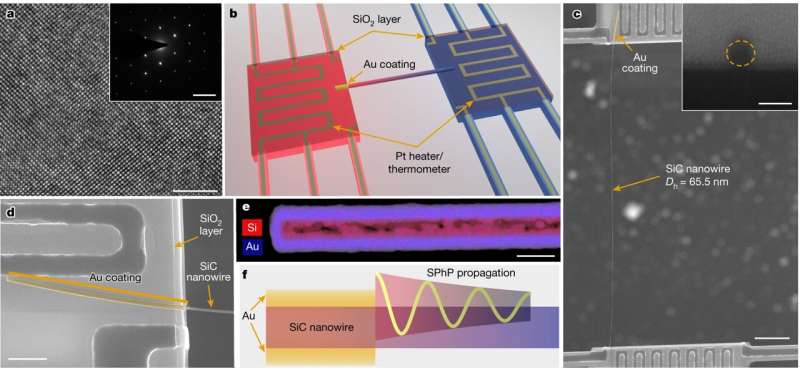This article has been reviewed according to Science X's editorial process and policies. Editors have highlighted the following attributes while ensuring the content's credibility:
fact-checked
peer-reviewed publication
trusted source
proofread
Researchers' breakthrough in thermal transport could enable novel cooling strategies

Vanderbilt mechanical engineering professors Deyu Li and Josh Caldwell are part of a team of researchers who have discovered a new heat dissipation channel using phonon polaritons that could have extensive implications for novel cooling technologies in devices like smart phones and other modern electronics.
The research was recently published in Nature under the title "Remarkable Heat Conduction Mediated by Non-equilibrium Phonon Polaritons."
It is well known that electrons and atomic vibrations (phonons) are the major energy carriers in solids. Research teams from Vanderbilt University and Oak Ridge National Laboratory (ORNL) were surprised to find that surface phonon polaritons, hybrid quasi-particles resulting from coupling between infrared light and optically active phonons, could contribute significantly to heat conduction in thin films and nanowires of polar crystals.
Although surface phonon polaritons have been predicted to contribute to heat conduction in polar thin films and nanowires, there has been no direct and conclusive experimental evidence for this to date. The Vanderbilt research team was able to demonstrate clear thermal conductivity enhancements in SiC nanowires with and without metallic polariton launchers at the ends.
"The substantial heat transfer capabilities of these polaritons can be engineered into novel cooling strategies, which are critical for a wide variety of technologies from consumer electronics to efficient building environment control," said Li. "This discovery may contribute to better living and efforts geared towards combating climate change."
Caldwell said phonon polaritons are a key focus within infrared nanophotonics research, with many applications emerging.
"I was excited to see that they can also provide a new heat dissipation channel, opening additional areas of impact, for instance ultrafast cooling in high-frequency and high-power electronic devices," he said.
More information: Zhiliang Pan et al, Remarkable heat conduction mediated by non-equilibrium phonon polaritons, Nature (2023). DOI: 10.1038/s41586-023-06598-0
Journal information: Nature
Provided by Vanderbilt University



















